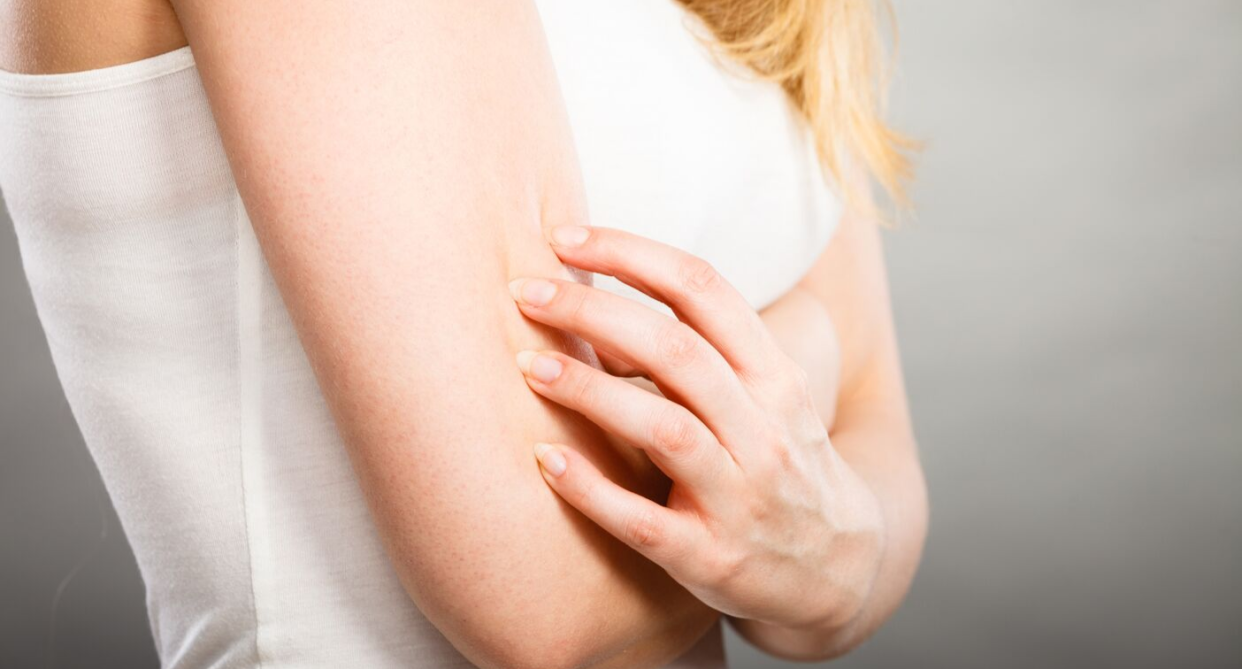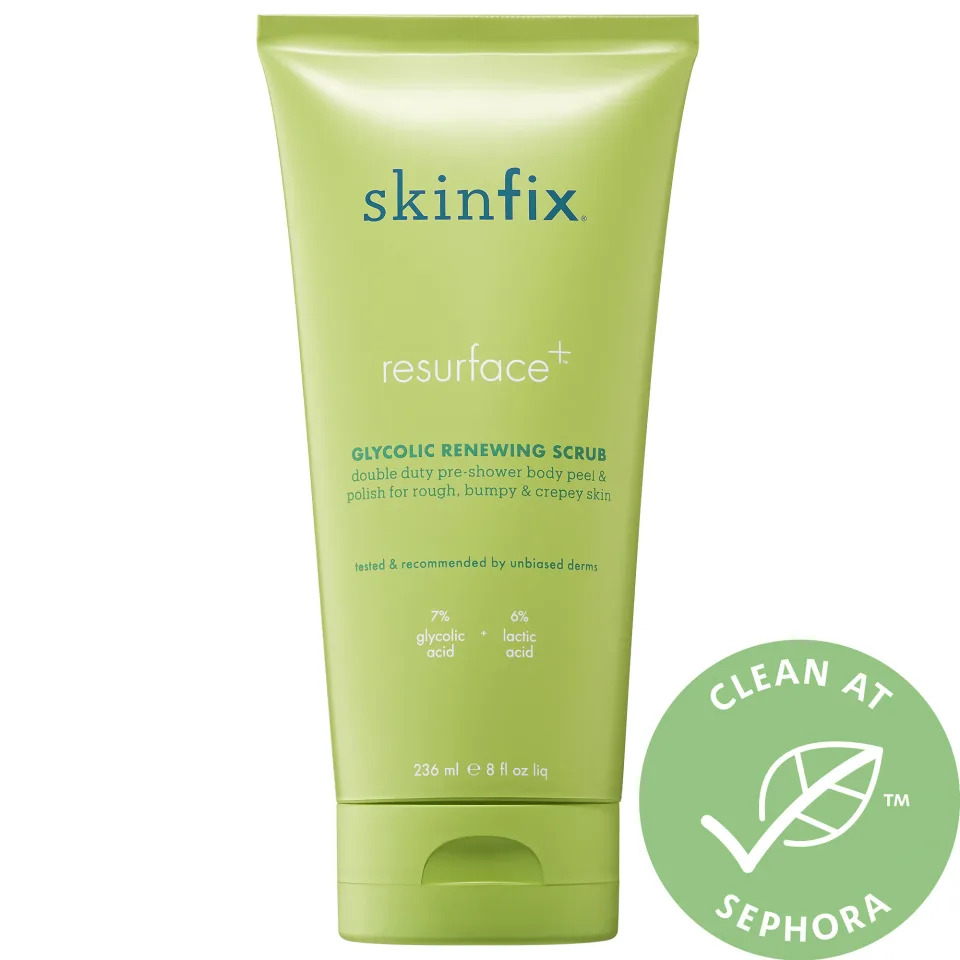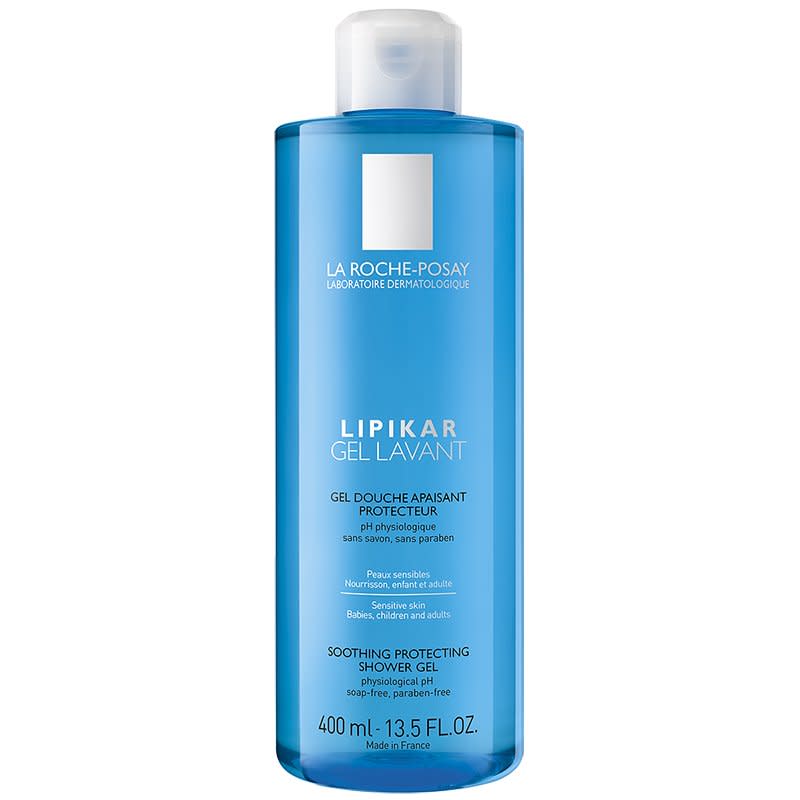Keratosis pilaris: How to treat those 'chicken skin' red bumps on your arm

I was complaining to a friend about how flabby my arms were getting when she turned to me with the biggest eye-roll and said, “have you seen my arms?”
While I would regularly refer to her toned arms as “Michelle Obamas,” for as long as I can remember, she’s always been insecure about the clusters of small red bumps on her arms and the same occasion flare-ups on her face and back.
Keratosis pilaris or chicken skin, as she calls it, is a common disorder caused by a disruption of the skin’s natural shedding cycle where the build-up of dry scaly skin forms a plug at the level of the hair follicle. While flare-ups can be caused by over-exfoliating and humidity and weather changes, keratosis pilaris (KP) is largely hereditary. 50 per cent of the population will have KP at some point in their lives.
“It typically occurs in childhood and for many people, they will grow out of by age 30 years. There are however some people who develop a late-onset variant occurring later in life as well as those who have a persistent variant that carries on into adulthood. KP may also be associated with other inflammatory skin conditions such as atopic dermatitis or eczema,” explains Dr Sonya Abdulla, Medical and Cosmetic Dermatologist of Dermatology on Bloor in Toronto.
And thanks to the downside of genetics, there is no cure for KP. But with that said Abdulla says those who have the early-onset variant, there is a strong chance that it will improve with time.
The goal is to maintain the health of the skin’s barrier. So to help reduce those those those red goosebumps and papules, Abdulla walks us through how to treat KP like a pro.
Look for the right skincare ingredients
“[Maintain] your skin barrier with hydrating skincare products as well as those that have exfoliating properties.I recommend daily use of moisturizers with AHA, BHA or lactic acid when getting out the shower. Quick pat dry, and while still damp, apply the moisturizer to the skin. As for exfoliating cleansers, look for those containing similar ingredients, these can be used intermittently once to twice weekly.”
CeraVe Renewing Lotion for Extremely Rough and Bumpy Skin

Shop it: $18, Shoppers Drug Mart
SKINFIX Resurface+ Glycolic Renewing Scrub

Shop it: $40, Sephora
La Roche-Posay Lipikar Gel Lavant

Shop it: $21, La Roche-Posay
Retire your loofah
“[Take] caution[with exfoliating] as some [products] can be irritating, causing inflammation and exacerbation of the KP. Keep exfoliation with any loofah, scrubs or face cloths to a minimum since these tend to be too irritating and may actually flare KP.”
ALSO SEE: Here's why you should stop using a loofah
Invest in natural fiber clothing
“Sensitive skin types [like KP] are often prone to eczema as well. These patients tend to do well with natural fiber clothing such as 100% cotton, linen or silk. Wool tends to be irritating and should typically be avoided if particularly sensitive or at a minimum, worn with a layer of cotton underneath to prevent irritation.”
Watch out for acidic foods
“There is no established clinical evidence showing direct causation between KP, eczema and diet. There are however some foods that may be irritating to the skin, especially in babies or children where direct contact of food and saliva with the skin trigger irritation. These include foods that are more acidic such as citrus, tomatoes.”
Consider laser treatments
“Once skincare routines are on point and the skin tends to smooth, patients often find there is residual erythema or redness at the hair follicle. Additionally, there is also a variant of keratosis pilaris (KP Rubra) where KP papules or bumps are quite limited but follicular erythema is a primary concern. In these contexts, a series of vascular laser treatments can be helpful to reduce the redness. Additionally, some patients benefit from laser hair removal to prevent the build-up of dead skin around the hair follicle and prevent further inflammation. Keep in mind, skincare is the backbone to KP management and requires ongoing maintenance even in combination with laser treatments.”
We are committed to finding you the best products at the best prices. At times, Yahoo Canada may receive a share from purchases made via links on this page
Let us know what you think by commenting below and tweeting @YahooStyleCA!Follow us on Twitter and Instagram.


